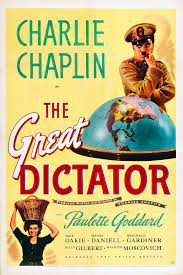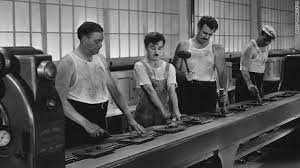This blog is written in response to the thinking activity on The Wasteland by T. S. Eliot given by Dr. Dilip Barad Sir at the Department of English, MKBU.
The Wasteland
Introduction
The wasteland is 'modern Epic' poem by T. S. Eliot.
This poem was published in 1922 and is considered as one of the most important poems of the twentieth century and central work of modernist poetry. The poem contents lots of references from literature and mythology from around the world and that's why it sometimes confuses the reader but after identifying these illusions the poem makes great sense.
The poem is divided in five parts,
The Burial of the Dead.
A Game of Chess.
The Fire Sermon.
Death by Water.
What the Thunder Said.
Central theme of the poem
The poem deals with the central theme of Spiritual degradation and Sexual perversion, as the poem progresses the themes go deeper and make more sense. Through those themes the poem points on the malaise of the modern world and how it is creating its own 'wasteland' by staying away from true spirituality.
1) What are your views on the following image after reading 'The Waste Land'? Do you think that Eliot is regressive as compared to Nietzche's views? or Has Eliot achieved universality of thought by recalling mytho-historical answer to the contemporary malaise?
Eliot is not regressive at all; rather , he pointed out a key to change the past mistakes of old people by giving historical and mythological examples.
If we compare Eliot to Nietzsche then we have to understand what both of the thinkers say.
Nietzsche denied the fundamental rationality of the universe and called Christian morality, ‘the slave morality’. said that "God is dead", thus he believed in "Will to Power", that the stronger people will rule. He gave his theory of 'Ubermensch' (Overhuman/ Superhuman or Superman) , an upgraded version of man who will be man but more than man. That was only theory and his somewhat futuristic imagery.
He himself said about his beliefs that,
"This deed is still more distant from them
than the most distant stars "
(The Gay Science)
In contrast Eliot speaks about past mistakes in order to achieve better results in present and in future. He is not regressive but he seeks progress with knowledge of past and present understanding. He looks backward in Upanishads, Buddhism and in Christianity only to go forward. He wants to point out past mistakes that have repeatedly happened throughout history and by identifying it he does not want to repeat it. As the saying goes,
“Those who cannot remember the past are condemned to repeat it.” – George Santayana
2) Prior to the speech, Gustaf Hellström of the Swedish Academy made these remarks:What are your views regarding these comments? Is it true that giving free vent to the repressed 'primitive instinct' lead us to happy and satisfied life? or do you agree with Eliot's view that 'salvation of man lies in the preservation of the cultural tradition'?
I don't think that giving free vent to the repressed 'primitive instinct' leads us to a happy and satisfied life as everyone has their own way of living life and that can be harmful at Grand level. When everyone has a choice to live their way there has to be consequences.
Once action can bring happiness to themselves but also can harm others, in that scenario there should be limitations and proper management.
The type of management we seek can be found in our culture and tradition. We don't have to cling into our tradition and culture but from time to time also have to modify and make changes that can be helpful and appropriate to time and future.
3) Write about allusions to the Indian thoughts in 'The Waste Land'. (Where, How and Why are the Indian thoughts referred?)
Poem 'The Wasteland' contains various images of Mythological and Literary allusions from various countries and languages. Throughout the four parts of the poem Eliot describes the themes of Sexual perversion and Spiritual degradation and the malaise of modern world, to seek redemption and answers he comes to the Knowledge of 'Upanishad' in the fifth part of the poem 'What the Thunder Said'.
“Ganga was sunken, and the limp leaves
Waited for rain, while the black clouds
Gathered far distant, over Himavant.
The jungle crouched, humped in silence.
Then spoke the thunder”
In this part poem refers to the divine message of Brahma the Prajapati, the father of all three beings men, demons and gods.
Da- the message from the sky and it's interpretation in three Varieties
Datta : to give, not only charity but giving oneself for some noble cause. It's not mere mechanical activity but to devote oneself for noble deeds and for that he has given an example of Karna, Bhamasha.
Dayadhvam: Sympathy, empathise yourself with the
sorrows and suffering of others, come out of your isolation and live into others.
Damyatah : Self Control, control over one’s passions and
desires.
Poem ends with the line,
“Shantih shantih shantih"
The poem ends with the three repetition of the word "Shantih" that comes from Upanishad' and suggests the meaning 'the peace which passeth understanding' through this line poet wants to achieve and share the peace to all mankind.
4) Is it possible to read 'The Waste Land' as a Pandemic Poem?
Poem 'The Wasteland' was published in 1922 so most of the time it was studied, it was studied through the lens of post World War I and II, but thanks to Elizabeth Outka we got to see the hidden side of the poem that reflects the Influenza Flu Pandemic as the poem is Collage of many images. The Spanish Flu that was acquired in the same era of time in 1918 can also be part of the reading of the poem 'The Wasteland'.
The poet was also caught by the Flu in its second wave in 1918, the autobiography elements are also seen in the poem, one wasteland of pandemic is also seems to be created in the poem.
.jpeg)





















.jpeg)

















